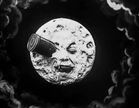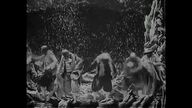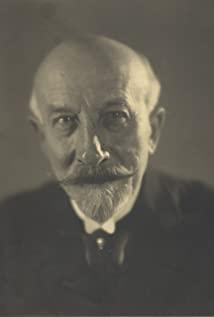1. Méliès discovered and created a series of film techniques such as fast and slow motion, stop and reshoot, dissolve, and transition from the perspective of magic and theater directors. Méliès produced "Joan of Arc", "The Land of the Fairies", "The Disappearance of the Lady", etc., as well as this "Journey to the Moon", so he is also known as "the father of theatrical film".
2. The Destruction and Rebirth of "Journey to the Moon". The movie Journey to the Moon. Born in 1902, it incorporates a large number of Méliès's own magic juggling effects, and presents a beautiful fantasy world to the audience through artificial scenery. 3. "Magic Stunts" of Early Fantasy Films First, "Journey to the Moon" can be said to be a collection of special effects techniques for fantasy films in the silent film period. Second, the picture composition and connection. Méliès owns a large theatre and once had a wealth of stage drama energy. Therefore, Méliès's film stories are presented in the form of dramatic art. In the era of Méliès, the "Moon of Human Faces" not only almost broke through the limits of the abstract thinking of early filmmakers, but also required a relatively complex processing process to express this effect on the film medium. Many special effects scenes in my country's CCTV 86 version of "Journey to the West" were also filmed using production methods such as stopping and reshooting, multiple exposures, etc. There are also location structures for the fantasy movie Harry Potter and the sci-fi movie Blade Runner.
3. Cultural imagination of sci-fi genre films.
Horror films were basically formed in the 1930s, science fiction films were formed in the 1950s and 1960s, and fantasy films were independent genre films after the 21st century. These types of films belong to fantasy films.
The theme of "Journey to the Moon" depends on the novels about the moon written by two famous western science fiction writers, Verne's "From the Earth to the Moon" and his successor Wells' "The First Man on the Moon".
The writing background of "From the Earth to the Moon" is a science fiction novel written by Verne in order to celebrate the freedom of the American people after the end of the American Civil War. "From the Earth to the Moon" is, to some extent, a 19th-century version of "The Martian" by contemporary internet science fiction writer Andy Weir.
All the adventure narratives encountered by human beings on the moon in "Journey to the Moon" are based on the science fiction novel "The Earliest Man on the Moon" by Verne's successor, the British writer Wells. Wells' novels have great reservations about Science and Technology News, and he often borrows the form of science fiction to express his desire for reform. The same goes for The First Man on the Moon. The novel borrows everything that humans have seen and experienced on the moon to reflect on the selfishness, ruthlessness and war violence of human beings in reality, and even created the writing genre of "dystopian fiction", which has become today's enduring science fiction genre.
Chinese writer, thinker, revolutionary. Lu Xun's evaluation of science fiction: "The classic science fiction narrative is determined by how to "weave human feelings".
When the color version of Journey to the Moon was rediscovered in 1993, the happy ending copy was lost, and was not found accidentally until after 2000, when restoration began. With the end of World War I and World War II and the end of the Cold War, people later began to think deeply about whether sci-fi movies that sang adventures in outer space reflected the logic of conquest of Western imperial colonialism in history?
With his unique perception of magic and theatrical arts and his dedication to the emerging seventh art of film, George Merry created the immortal work "Journey to the Moon".
View more about A Trip to the Moon reviews







